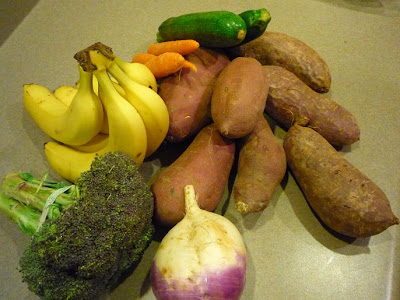I read a lot, and perhaps, too often, the "diet last moment" in which, based on the allegation: "fats burn in the fire of carbohydrates", power is taken "single-issue". Let me give an example: the banana diet or the grapefruit or any other food that is rich in sugars and completely devoid of lipids.
In modern times, in which the science of nutrition is manipulated by "multinational wheat" and a "medical" culture that shows a great ignorance by continuing to recommend a carbohydrate consumption over the top (if you're not an athlete) and consumption protein stupidly low (even if you are not an athlete), it is only logical that the statement soprariportata biochemistry is misunderstood and is being used as an excuse to "endorse" these ancestral theories of some "nutritionists" Italian.
Truth or urban legend then?
Both things; chemically speaking is more than correto affirm that the fats are in need of glucose to be oxidized, but there is a misunderstanding. "Burn" what brings you to imagine this verb? Think about it a little. The "burn" gives us the idea to destroy and render useless, to get rid of something, and tell me if I'm wrong. "Burning fat", then, gives us the idea of "losing" to get them to ashes, then unusable. Well, there is larger error. In biochemistry, "burn" means the ability to extract energy from a given substrate, indicating the metabolism, which are carbohydrates, fats or proteins, "burn" is the condition of ATP can withdraw from them.ATP: currency trading
Money: how our economy, even our body is based on a "money", this is ATP or adenosine triphosphate. It is not my intention to go into the chemical treatment of this molecule, so do not expect long and boring descriptions of reactions leading to its formation.Currency trading because all our body works the ATP, cell reproduction, growth, each reaction abbisogna of this coin. You understand, then, how the various macronutrients are nothing but "sources of money." Except for several exceptions, such as membrane phospholipids and structural proteins, the remaining substrates only serve to give ATP.
When you pull on a pair of sets of curls, for example, ATP consumed, fat, muscle glycogen and amino acids are "burned" just to give ATP and be able to continue the exercise.
Krebs cycle and glucose availability
We get to the point, the cycle of chemical rezioni for when such claim. The Krebs cycle or "tricarboxylic acid cycle" is the intermediate stage, after glycolysis and betaossidazione, and followed by "respiratory chain of electrons", adapted to extract the greatest amount of ATP from lipids, glucose and amino acids; residues of this cycle are water and carbon dioxide.
The glucose, through various reactions, it is converted into oxaloacetate, an essential substrate for the Krebs cycle and occurs afinchè the acetyl-CoA (given by the oxidation of fats, or betaossidazione) can give the higher yield of ATP.
Oxaloacetate; this can only be obtained from glucose, which comes from the metabolism of carbohydrates, or by the oxidation of glucogenic amino acids does not matter, it is only essential that there is glucose to give oxaloacetate. What happens when we have limited availability of glucose?
You will read my article on ketogenic diets and, hopefully, you were able to make you understand how is the synthesis of ketone bodies. When there is poor availability of glucose, as in approaches "low carbs" or, more extreme, in ketogenic diets, the Krebs cycle is slowed down or completely blocked.
Remember that a gram of fat gives 9 calories? Well, when in short supply our dear oxaloacetate and the Krebs cycle is blocked, the acetyl-CoA, since the metabolism of lipids, begins to accumulate. The combination of 2 molecules of acetyl-CoA gives us a nice "ketone body."
Let's go back to the word "burn", "set fire" to a gram of fat in the Krebs cycle allows us to have 9 calories; give way, however, to ketosis gives us only 7 calories per gram of fat. It does not end here though; ketone bodies can not be stored and reused as with fat. When 2 molecules of acetyl-CoA merge, stop, end, it may be more divided, or used for other reactions of "cash withdrawal". The body, when glucose is scarce, it produces ketone bodies, and this production is almost always in surplus. Those whose needs are not only expelled through urine, sweat and breathing. Note well that there is a big waste of "money" in the absence of glucose and how, for the same calories, a ketogenic diet harbors a greater energy deficit.
Fats, burning fire of carbohydrates, will give us 9 calories. Instead, "dying" in the cold of ketosis only 7 calories per gram. The Krebs cycle allows us, therefore, to oxidize so total fats and withdraw them from the maximum quantity of ATP with very little waste of energy. The absence of oxaloacetate, however, carries a small gain of ATP with, in addition, a greater waste of money.
source : Fats burn in the fire of carbohydrates









